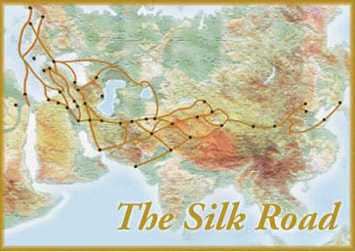Buddhist Cave-Temples and the Cao Family at Mogao ku, Dunhuang- Ma, Shichang
Prior to reading this article, I was unaware of the existence of The Moago Caves. Diving into a new spectrum of knowledge I can understand and appreciate the history surrounding these architectural masterpieces. During the 1060s through 1970s, the remains of these famous caves were discovered and much research began on discussing the dates and structures of the caves. Without an official published report on the Moago caves, it is necessary to look for knowledge of the architectural remains in the Cao family patronage. The Cao family is associated to the revelation of these Caves because of their economic dominance during their reign. The Cao family must be identified and awarded because it was their economic funds and support that allowed for the building of the caves. It is in my area of thought to note that this family was the ultimate source of power during their time because of their ability to create a worldwide phenomenon.
China is an important location thoroughly mentioned throughout this article because it has the pleasure of holding the remains of the five Buddhist cave sites in the region of Dunhuang. Out of the five famous caves of Dunhuang, Moago Ku is the most widely recognized cave because of its incorporation of Buddhist art in China. Moago Ku is described as a treasure because of its unique attention to Buddhist art. The Moago Ku is recognized as a historical monumental site or a cultural heritage site because of the artwork and storage of the cultural relics of China. In the north-western China region the five most important sites include: the Moago Caves, the Eastern Thousand Buddha Caves, the Wugemiao Caves, the Western Thousand Buddha Caves and the Yulin Caves. I found it very impressive that these caves were built throughout the fifth to the fourteenth century. This means that the caves were built with strategy and expertise because they withstood many years of wars, battles and environmental implications. To my surprise, the Caves survived through ten successive Chinese dynasties. This bewilders me because when I think of the fifth century I do not associate that period with proper means of tools and necessary items that would allow for Caves to survive erosion and other degrading factors. I also do not associate that period with proper means of tools and intellectual thinking that would allow one to physically build a cave. I truly commend the peoples of this period because of their unexpected academic knowledge.
Following the reading for this week, I am satisfied in learning the history of the Caves of Dunhuang. It is has allowed me to recognize my miscalculation of people’s knowledge during the construction period. It is clear that although the Caves were constructed centuries ago, during different stages of civilization, humans were able to prosper and function according to their means. According to the needs of the people, the caves may have been built for shelter, strategy or storage. These people built the famous Caves of Dunhuang which we now are diving into the remains of.

No comments:
Post a Comment